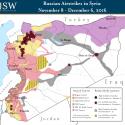Iraq Situation Report: December 7-20, 2016
Dec 20, 2016 - Emily Anagnostos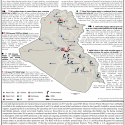
Local and regional actors are maneuvering to secure their position in 2017 and for a post-ISIS Mosul.

Local and regional actors are maneuvering to secure their position in 2017 and for a post-ISIS Mosul.
The Islamic State of Iraq and al-Sham (ISIS) poses an evolving threat to the U.S., its allies, and its broader interests. Its approach to information warfare has represented a key component of its overall strategy, including during the period it has faced sustained pressure. ISIS has suffered significant setbacks on the ground, yet has demonstrated the ability to adapt.
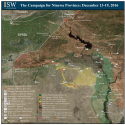
Operations in eastern Mosul largely paused from December 13 to 19 likely in order to stem the growing casualties taken by the Iraqi Security Forces (ISF) and to regroup before pushing into central Mosul. Meanwhile, the Popular Mobilization continued its push west, connecting its parallel lines of effort when it recaptured the north-south road between the Tel Afar Airbase and the southern town of Ashwa on December 13.
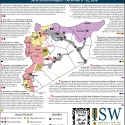
Opposition forces and civilians began to evacuate from Eastern Aleppo City on December 15 following bilateral negotiations between Russia and Turkey. Opposition forces also agreed on medical evacuations from Fu'ah and Kefraya in Idlib Province after Iran threatened to collapse the agreement. Meanwhile, ISIS recaptured the city of Palmyra in Eastern Homs Province on December 11, marking the first seizure of a major urban center by ISIS in Iraq and Syria since May 2015
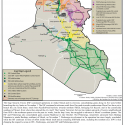
The Iraqi Security Forces (ISF) continued operations to retake Mosul and its environs, consolidating gains along its five axes before breaching the city limits on November 1.
The pro-Assad forces’ onslaught in Aleppo marks a key inflection point for the war in Syria. Eastern Aleppo’s imminent fall – to a coalition that includes Russia and Iran and its various proxies – will accelerate the war’s destabilizing effects. Jihadists will further improve their position within the Syrian opposition.
ISIS recaptured the historic city of Palmyra in Eastern Homs Province on December 11 following the withdrawal of pro-regime forces, marking the first seizure of a major urban center by ISIS in Iraq and Syria since ISIS
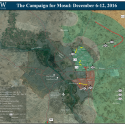
The Iraqi Security Forces (ISF) made significant gains in northeastern Mosul from December 6 to 12, but struggled to advance in the southeast. The ISF ordered a change in tactic on December 4 in order to address the lopsided eastern offensive, attempting to make rapid advances in the southeast rather than grind through neighborhood-by-neighborhood clearing operations. The shift, however, failed drastically when the rapid gains left the ISF open to ISIS counterattacks, resulting in heavy casualties on December 6 and 7. In response, the ISF moved units previously allocated to breach Mosul’s southwestern neighborhoods to reinforce efforts in the southeast on December 10.
The United States and its partners can improve regional security and stability in Eastern Europe by supporting the modernization and reform of the Armed Forces of Ukraine more aggressively. Ukraine has suffered from consistent Russian military aggression since Russia occupied the Crimean Peninsula and militarily intervened in the eastern Ukrainian Donetsk and Luhansk Oblasts in 2014. The overall unpreparedness of the Ukrainian military and its inability to match the capabilities of Russian forces allowed Russian and Russian proxy forces to gain a foothold in eastern Ukraine from which they continue to destabilize the entire country. The Ukrainian armed forces have been partially restructured and strengthened in the face of this constant pressure, enough to stabilize the front lines for a time. They require significantly more support of all varieties, however, if they are to stop the advance of Russia and its proxies permanently, to say nothing of reversing the armed occupation of Ukrainian territory.
